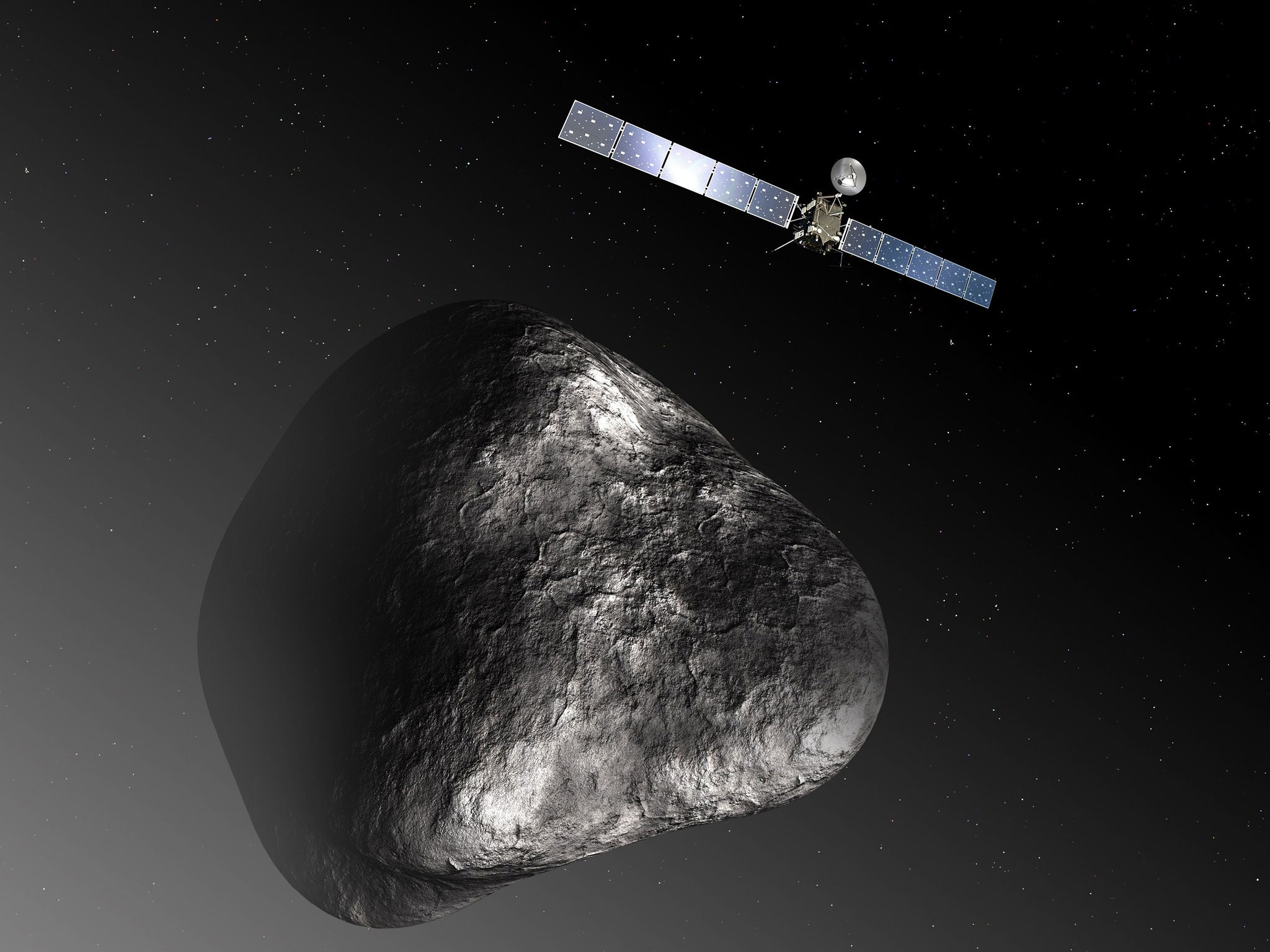European Space Agency gives in to demands to release pictures of Rosetta spacecraft's decade-long hunt for comet
Aficionados consider the mission to be 'the World Cup final' of recent space history, and want to witness its conclusion

Your support helps us to tell the story
From reproductive rights to climate change to Big Tech, The Independent is on the ground when the story is developing. Whether it's investigating the financials of Elon Musk's pro-Trump PAC or producing our latest documentary, 'The A Word', which shines a light on the American women fighting for reproductive rights, we know how important it is to parse out the facts from the messaging.
At such a critical moment in US history, we need reporters on the ground. Your donation allows us to keep sending journalists to speak to both sides of the story.
The Independent is trusted by Americans across the entire political spectrum. And unlike many other quality news outlets, we choose not to lock Americans out of our reporting and analysis with paywalls. We believe quality journalism should be available to everyone, paid for by those who can afford it.
Your support makes all the difference.Space enthusiasts have won a battle to force the authorities to release images from a spacecraft’s decade-long interplanetary mission to hunt down a comet, after complaining they would be denied watching their equivalent of the World Cup final.
After 10 years hot on the tail of Churyumov-Gerasimenko, an unmanned comet-hunting spacecraft named Rosetta is now close enough to its target to take its temperature.
The robotic spacecraft, expected to be the first to land on a comet’s surface, will collect invaluable data about the physical properties and composition of its target.
But as Rosetta’s six-billion-kilometre journey reaches its climax, its many followers on Earth have complained the European Space Agency (ESA) is denying them the chance to share in the excitement by refusing to release regular images of the mission.
The ESA, which operates the craft, has only released weekly updates from Rosetta’s on-board cameras – insisting on a six-month moratorium on circulating mission data, images included. The body said these rights had been granted to the teams which designed and built the scientific instruments.
Aficionados consider Rosetta to be one of the most exciting missions of recent space history – and Daniel Fischer, a space science writer, is among those who had been frustrated at being unable to watch.
“Imagine it’s the soccer World Cup final, but you can’t watch it live on TV,” he wrote in New Scientist magazine. “The sport’s governing body has decided that all but a few sample photos of it will be embargoed for half a year and that all decisions by the referee will have to be reviewed by experts over the coming months before a winner can be announced.”
Enthusiasts deserved the chance to “ride along” with a mission that is costing European taxpayers €1.3bn (£1bn), Mr Fischer said, to “feel the excitement as a new frontier unfolded far from Earth”.
The ESA’s intransigence was undermined when the French space agency CNES leaked “sensational new images of the comet’s icy core”. They showed a nucleus in two parts, with “a shape far weirder than any seen before – now nicknamed the rubber duck”.
Following a feverish Twitter debate, a group of German space enthusiasts sent an open letter to the authorities involved, calling for full access to all images from Rosetta.
The ESA has now made concessions. It has agreed to publish an image a day from Rosetta’s second camera, which is used for navigation purposes. The images only have a resolution of one-fifth that of the main system. Images released today show the craggy surface from just 500km, outlining its ridges.
As the craft approaches the comet’s inner solar system, it will observe how the ice and dust of the object is heated by the Sun. In November, Rosetta will release a small lander, which should touch down on the surface of the comet, also known as “67P”, drill itself into the ice, and take photographs and scientific measurements on the actual surface.
Mr Fischer said of the relaxation: “It’s a start. It’s Europe’s time to shine – and even set a fresh precedent for public access to data. For next year two Nasa spacecraft will again be encountering new worlds up close for the first time: the dwarf planets Ceres [in March] and Pluto [July]. We still live in an exciting era of space exploration – that is, if we are allowed to share in the fun.”
Join our commenting forum
Join thought-provoking conversations, follow other Independent readers and see their replies
Comments